This is my brain on the Twine Task.

The Twine Task had me in knots for more than a week. Self-limiting beliefs interfered with the process, resulting in the same tasks being completed 2 or 3 times, just as I tried to wrap my head around it all.
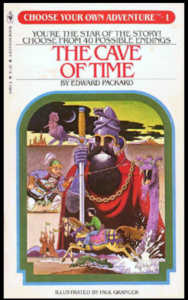
The process began with a lot of enthusiasm. “Choose Your Own Adventure” books provided some of my fondest childhood memories, so I loved the idea of building my own story. In addition, my research interests lie in using technology and narrative techniques to help facilitate positive behaviour change. Learning about Twine as a tool for interactive, non-linear storytelling just made sense.
The process I followed, however, did not necessarily make sense.
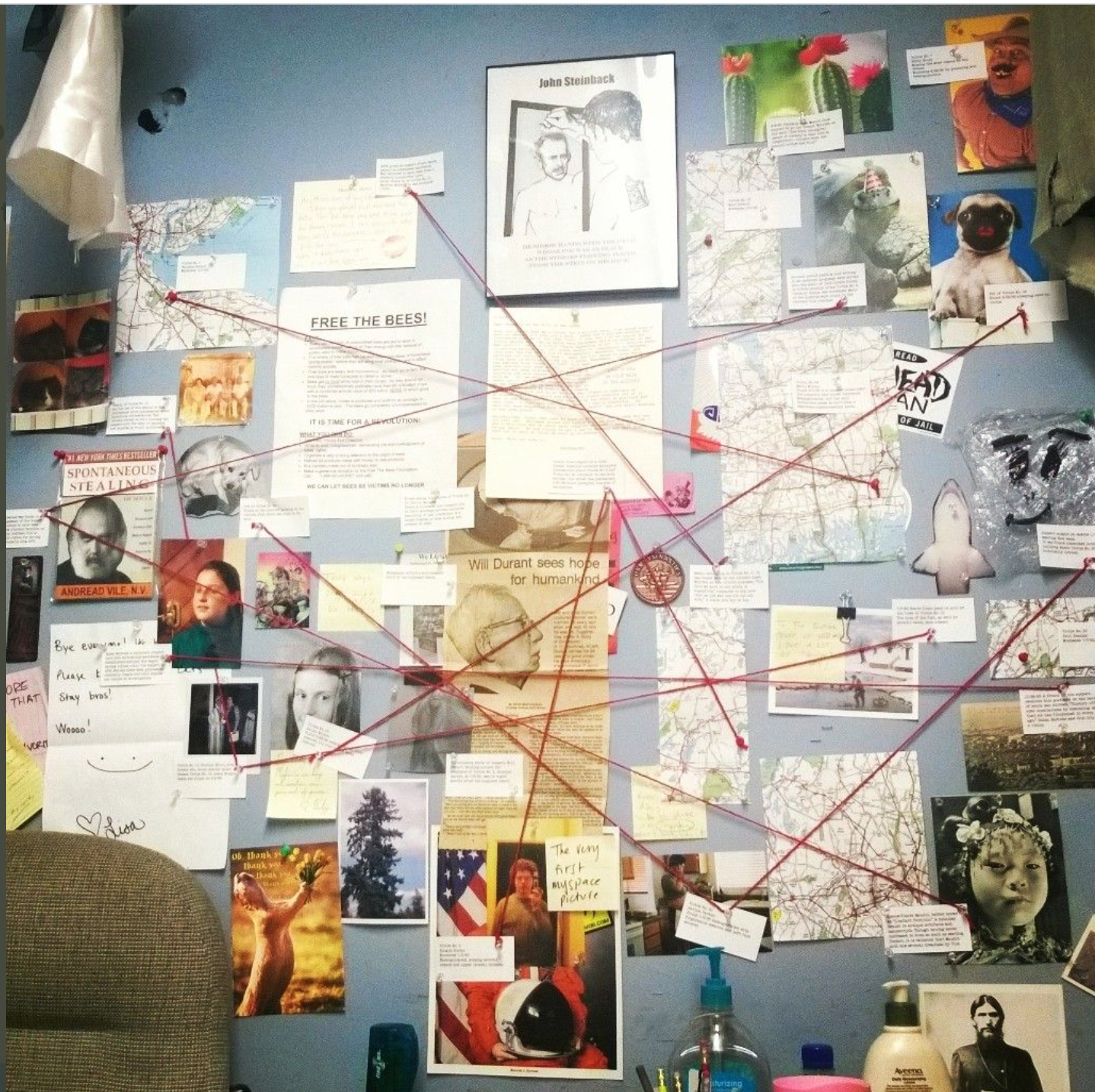
Just like the red-stringed “ah-as” of popular detective shows, I envisioned a magical process where exciting possibilities and connections would fall into place. Although I viewed some Twine tutorials that demonstrated the tool’s features for story mapping, I chose to get some ideas on paper first. I began with the opening scenario for my story and some possible pathways that could branch off from there. True to my usual process of writing-before-typing, I began this task by first writing out the sequences, both on paper and on post-it notes.
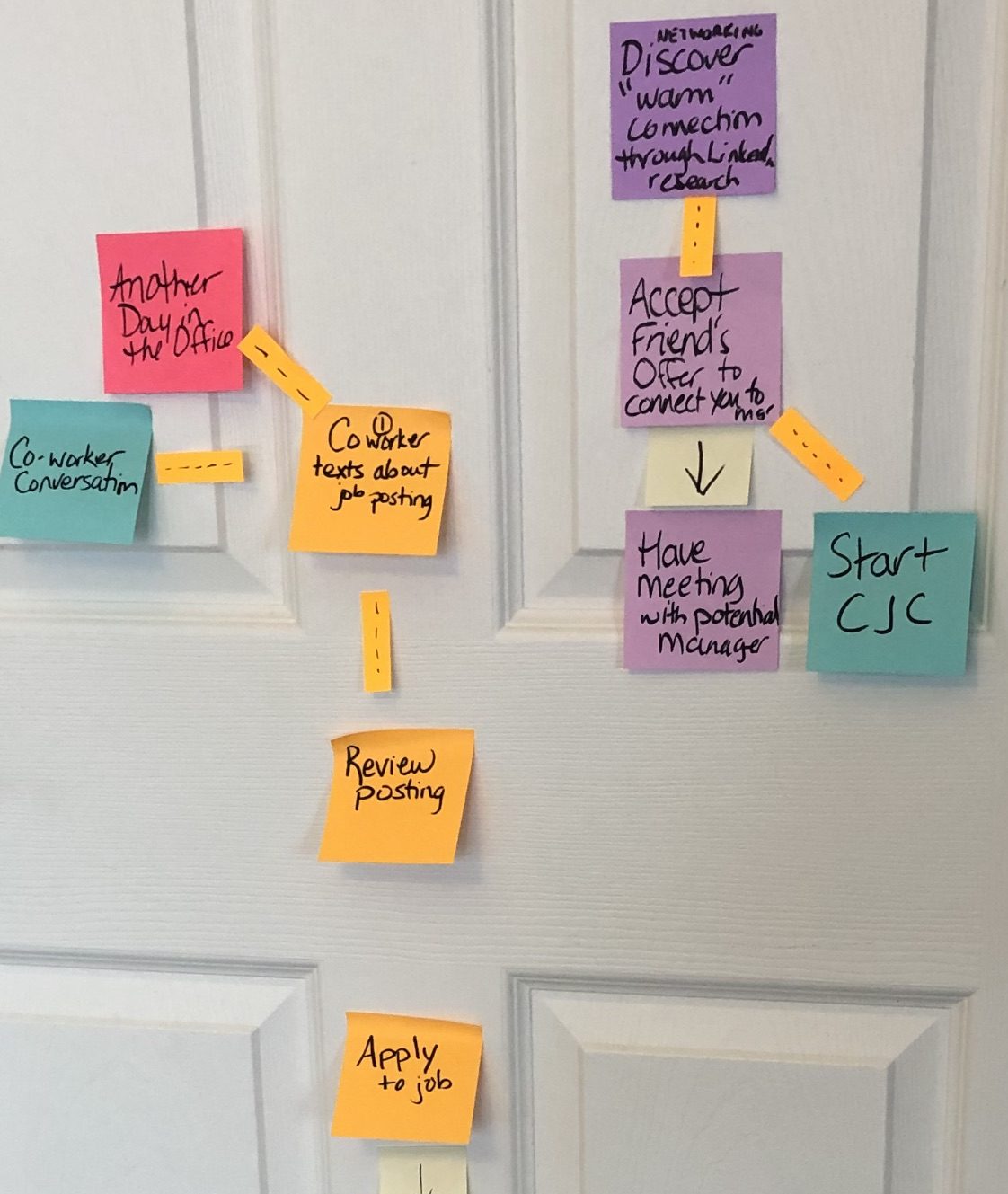
This might be considered to be a type of “pre-writing” as described by Bolter (2001). It marked the beginning of a process in which “the associative relationships define alternative organizations that lie beneath the order of pages and chapters that a printed text presents to its reader” (Bolter, 2001, p. 33).
I quickly found that I was feeling a little lost and decided that I wanted more structure in the process. I changed to the keyboard, typing the opening scenario and the optional pathways that could unfold from this scenario. When I started to see that the branching passages could become overwhelming, I began colour-coding the various passages that could ensue from each of 3 options in the initial scenario. This colour-coding served as an anchor to help me to keep track of the various story branches.
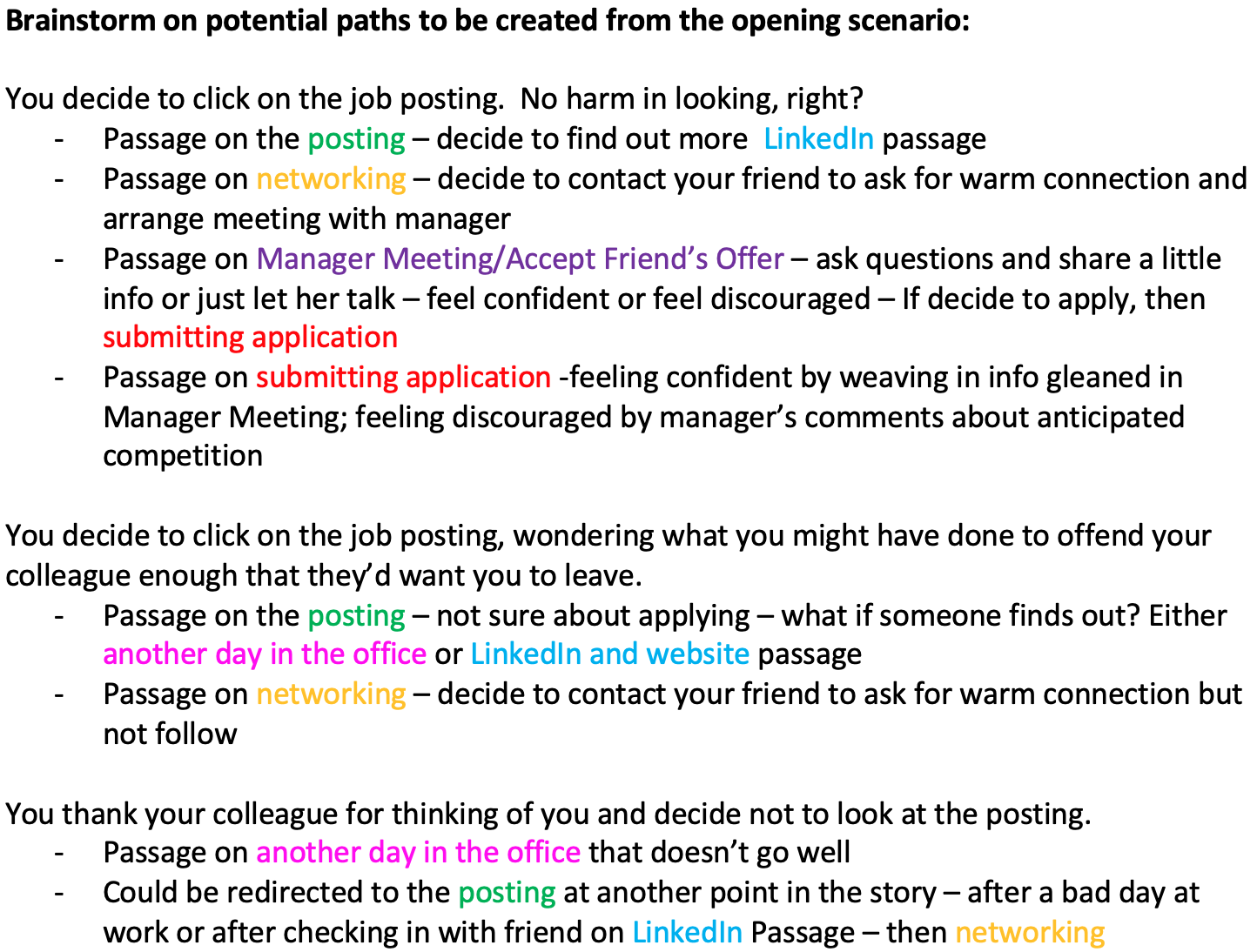
Not long after colour-coding potential pathways, I decided that I would benefit from creating a table that included the colour-coding and clustered the pathways (also referred to as “screens” or outcomes that resulted from decision points) together. This allowed me to create another visual of which screens led to one another.
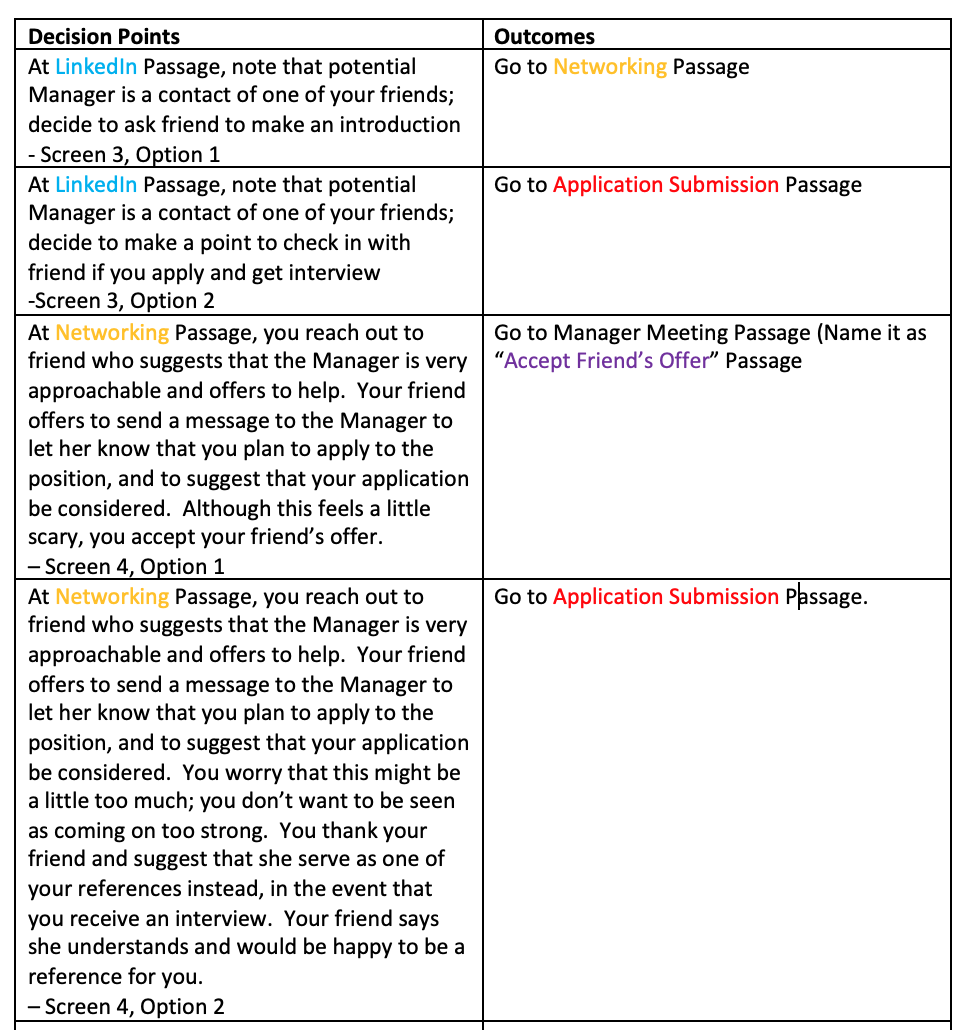
Creating a Word document for this purpose also allowed me to search for certain words or screens when I became confused. Twinery.org also provides this searchability, but I wanted to have the narrative pathways resolved before I tackled that new technology.
I discovered it was easier to understand the flow of the various story options when I assigned screen numbers to the passages that resulted from a given decision point (e.g., Screen 5, Option 2). This system evolved organically; I didn’t envision it from the beginning of the task, and I had to double-back and add these details to my earlier work once it fell into place.
In chatting about the Twine Task with a classmate, I described apprehension about utilizing the Twine technology. I shared that it reminded me of the “if…then” statements of dreaded geometry lessons and the 0s and 1s that never made much sense to me in my Grade 10 “Computer Programming” class. “I’m not a sequential thinker,” I heard myself say (and realized that I’d heard my mother say that about herself over the years.)
Once I actually started using Twine, the process went fairly smoothly and I lamented not using the technology much earlier. It was even better than my “default” post-it note process!

I used my Word document to supply story content to Twine, and I found Twine’s hypertext process to be a breeze in comparison to the work I had completed to that point. I had feared that the hypertext “coding” would be far more complex and cumbersome.
After creating passages in Twine, I copied and pasted elements of the story back into my Word document to keep track of the specific paths that would lead a user to a given passage. This helped me to create passages that were generic enough to accommodate diverse pathways.

While creating an interactive story with Twine was surprisingly simple, I did experience frustration with finding simple ways to share my Twine with others. After zipping files and copying them into text editors, a user would still have to know how to download a file and open it with the appropriate application. I wanted to remove those steps. After researching a variety of options, I landed on itch.io. While this eliminated the steps of downloading and opening, I am not fully satisfied. I would prefer the link to be embedded within this blog, requiring just a single click.
The Twine Task process demanded equal parts of sequential and abstract thought. I developed an appreciation for the complexities of interactive gaming. It is a genre that demands that imaginative, big-picture storytelling be interwoven with the minutia of details and possibilities, all within the context of a narrative that allows players to have agency in the storytelling. This challenge can present a “narrative paradox” where “…the aim to give control over a character in a virtual environment to the user, clashes with the aim to provide a coherent and author determined course of events within this environment” (Aylett, 1999, cited in Swartjes, 2010, p. 4).
Reflecting on my interest in helping people to “re-write” personal narratives with increased agency, I can see that the non-linearity of hypertext may afford opportunities for individuals to associate new ideas and pathways with their life stories. Indeed, Dillon (1996, p. 27, cited in Miall & Dobson, 2001) asserts that “contemporary hypertext thinking seems tied to concepts of association and non-linearity of access…” The flexibility of hypertext may be especially conducive to the intentional authoring of one’s life. Within an educational context, hypertext could fit well within narrative learning environments that engage students as co-authors of a story, and consequently enhance learning. “By enabling learners to be co-constructors of narratives, narrative-centered learning environments can promote the deep, connection-building meaning-making activities that define constructivist learning” (Mott et al., 1999, cited in Swartjes, 2010, p.4).
The Twine process demonstrated the diversity of paths that can lead us to the same place. It is both a challenge and a relief to see to discover that the path is not linear; our lives are not a simple series of “if…then” statements, as much as we might like to think so. With the illusion of control shattered, we are free to see that no mistake is finite and unrecoverable. There are many ways for us to get to our desired destination. We are unique individuals, and technology needs to provide the flexibility for us to meander our way through our multiple choice-points and preferred ways of being. As I developed my interactive story, I wondered about including options that would be true “dead ends”. But, as long as we are alive, there are no true dead ends. Everything is possible.
To check out my first attempt at a Twine interactive story, click here!

References:
Bolter, J.D. (2001). Writing Space: Computers, hypertext, and the remediation of print. Mahway, NJ: Lawrence Erlbaum Associates. Chapter 3
Miall, D & Dobson, T. (2001) “Reading hypertext and the experience of literature.” Texas Digital Library.
Swartjes, I.M.T. (2010). Whose Story Is It Anyway? How Improv Informs Agency and Authorship of Emergent Narrative. University of Twente. https://doi.org/10.3990/1.9789036530040
Mel
February 22, 2021 — 7:32 am
Kirsten, your journey through this task is inspiring! I appreciate the story of your process and expressions of initial doubts that fade away when the task is complete. You have such a way with words, and the following lines are so poetic, magical, and in alignment with the power of hypertextuality. What a great way to start a Monday morning!
“We are unique individuals, and technology needs to provide the flexibility for us to meander our way through our multiple choice-points and preferred ways of being. As I developed my interactive story, I wondered about including options that would be true “dead ends”. But, as long as we are alive, there are no true dead ends. Everything is possible.”
KIRSTENMCKINNON
February 22, 2021 — 10:27 am
Thank you so much for your kind words, Mel! I am glad that the post inspired you.